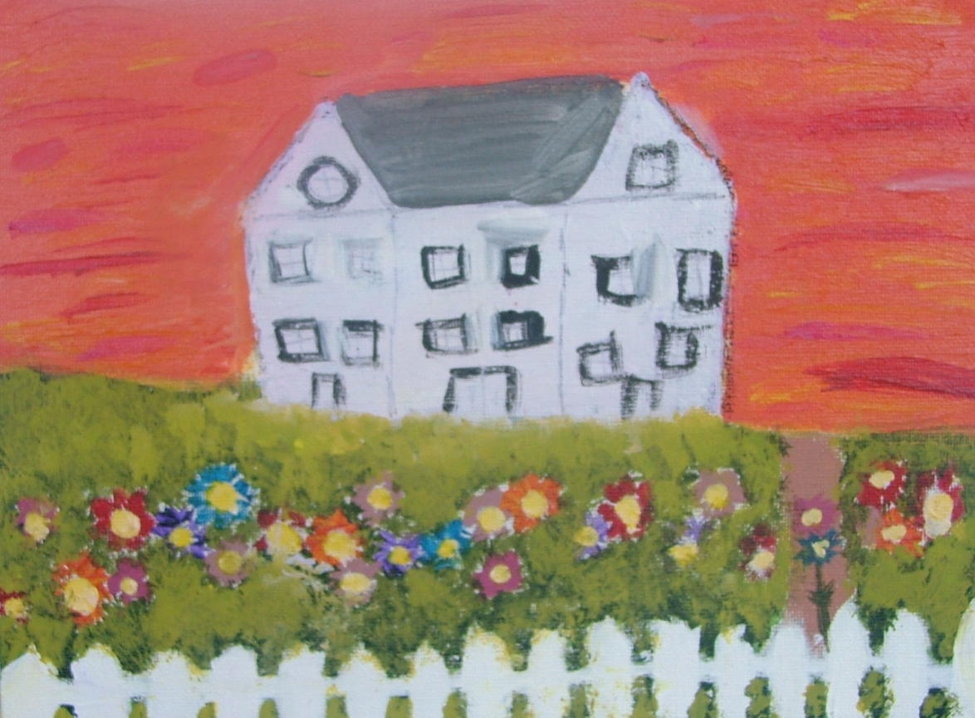More links related to these stories:


Angela Johnson
– As told by Jeff Moles
Angela Johnson was around 30 years old when she died from a chronic illness in April 2010 while living on the streets of Nashville.
She was a client of Room In The Inn, an organization that provides services and shelter for Nashville’s homeless population.
Jeff Moles, a 13-year staff member at Room In The Inn, tells her story.
Sly Smiles and Beautiful Dreams
The person I thought of was Angela. I think she may have been about 30 when she died. She was one of the first people that I felt like I’d gotten to know pretty well in my time at Room In The Inn who died shortly thereafter. She was an African American woman. She had dark skin. She just had a very warm look to her, like she was somebody that usually had a smile on her face, just kind of a sly smile, is how I would describe it. What I always remember were the gloves, that she was always wearing gloves and she was always freezing cold.
Angela was just a person who was easy to talk to. When I first came to Room In The Inn, I had no experience working with people experiencing homelessness. That was definitely not my comfort zone, and she was one of the people who helped put me at ease and helped me understand the common humanity that we all share.
Seeing just how passionate she was and how, even though the circumstances of her life meant that she was unable to achieve what she wanted, that she still had these beautiful visions and dreams for what life could be like. I know she went through a lot of pain and abuse, but to still have that ability to dream was really powerful for me to experience and helped me understand who I was.
She had a very vivid dream of what she wanted her life to be like. The main part of that dream was being able to care for her daughter and to be able to provide a place for her. She would talk about her daughter, Daisy, and how that was her dream for both of them—to be able to go out in the country and have their own house with a white picket fence and flowers.
They had been separated from one another since Daisy was born, but Angela just really, really loved her. Angela was never in a situation where she was able to really take care of Daisy, but at the same time she had a relationship with her, and it was a very loving relationship. To be able to see her express that dream and that vision for her life, I think was just a really beautiful thing.
In their own words:
Lessons from Angela.
The Artist
There was just something about her that was different. She was very creative. She was always doing some kind of artwork. She was dealing with a lot of chronic illnesses and health issues. She would just be freezing cold all the time, so she’d be sitting there with layers of gloves on in the middle of the summer. Even with that, she would have a paintbrush in her hand or a pencil and would always be creating something.
She definitely came to Room In The Inn and used our art room and art supplies, but I think she also had her own because she would always besitting outside at a picnic table drawing and painting in our day center. That was an important thing for her.
Her iconic art piece to all of us at Room In The Inn was one she called, “Daisy’s Dream.” It was a house in this yard with a white picket fence and all these flowers, and it was just this beautiful, colorful scene. A lot of times she would be draw a scene like that. She would recreate it and make it look just slightly different.
When Angela died, I went to her funeral and met Daisy (I would say she was probably about 7 or 8), who was exactly like I had envisioned her being. She was this little cute girl in a white frilly dress, just like she had described. I actually presented her with the copy of the painting that her mother had done, which was a really impactful, very moving experience.
More Than Just A Roof Overhead
[Angela’s] chronic illness got the best of her, I think. It wasn’t violence or anything like that. I think she had case managers and folks that she worked with. I know that she went to the women’s mission quite a bit, and then she went out to Room In The Inn in the winter. I don’t know if she ever stayed out.


I don’t know how long she’d been homeless. I always got the impression it had been for a while. She definitely was not new to the streets when I met her, even though she was pretty young. I think a lot of it was survival. Making sure that she had a place to sleep and food to eat… I know that she would collect little gifts and things to send to Daisy, but I think a lot of her life was spent just surviving.
Housing is the solution to homelessness—we need more affordable housing. We need to break down systems we’ve created that lead people into homelessness, things like health care, reform of our criminal justice system, making sure that everybody has access to meaningful employment and income opportunities.
But I think just as important, people need to have a sense of belonging. I think a lot of people are in the situations they are because they have just fallen out of all those systems, of families, of systems of care that are meant to protect us and hold us up, and we have to kind of recreate that community, that social safety net—those ties that bind us together and make sure that we don’t leave people behind.
I think homelessness robbed [Angela] of her ability to be healthy. It tried to rob her of her dignity, and she was really able to maintain that like few people have been that I’ve been able to see. I certainly think if she had not been homeless, she would have had a much easier time pursuing her dreams for herself and her daughter.
She definitely wanted housing. To the best of my knowledge, she never got any.
Angela coped with a chronic illness that ultimately ended her life. Chronic illnesses are long-term health conditions such as diabetes, cancer, chronic obstructive pulmonary disease, asthma, heart disease, or HIV/AIDS. Maintaining one’s health is significantly more difficult while living on the streets or in shelters. People without homes have higher rates of illness and die on average 12 years sooner than the general population. Housing status is a significant social determinant of health.
A lack of access to health care and the means to manage the specific needs of a chronic illness can present a formidable barrier to positive health outcomes for people experiencing homelessness. Challenges also extend to the health care provider, who may struggle to develop a comprehensive treatment plan or coordinate care for someone without stable housing who may not be able to attend follow-up appointments or consistently take medication.
The very nature of being homeless creates new health problems and exacerbates existing ones. Life on the streets is stressful, and daily survival often takes precedence over longer-term health care needs. Chronic health conditions like high blood pressure, diabetes, and asthma may become worse because there is no safe place to store medications properly. Furthermore, poor nutrition, an inability to receive proper wound care, and a dangerous environment can pose significant health risks for people like Angela and others struggling to manage a chronic illness while experiencing homelessness.
In their own words:
A mother’s love.
What can you do to stop homeless deaths?
Join us in working toward a world in which no
life is lived or lost in homelessness.

